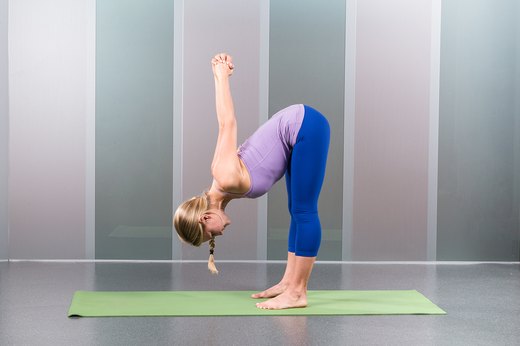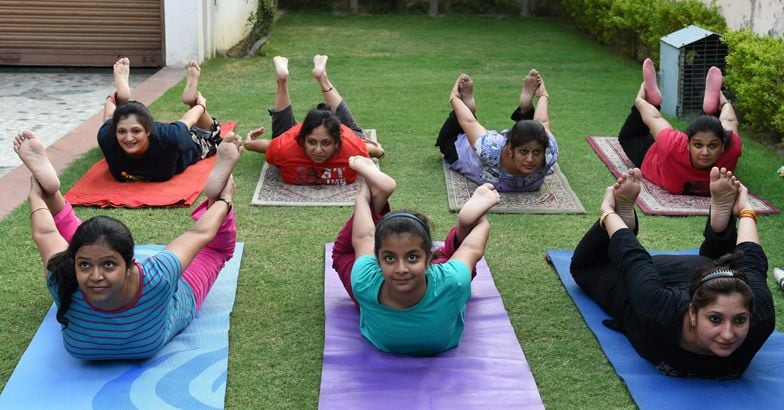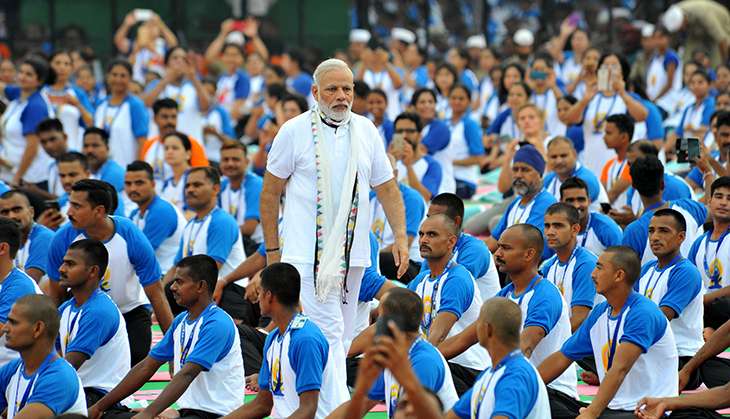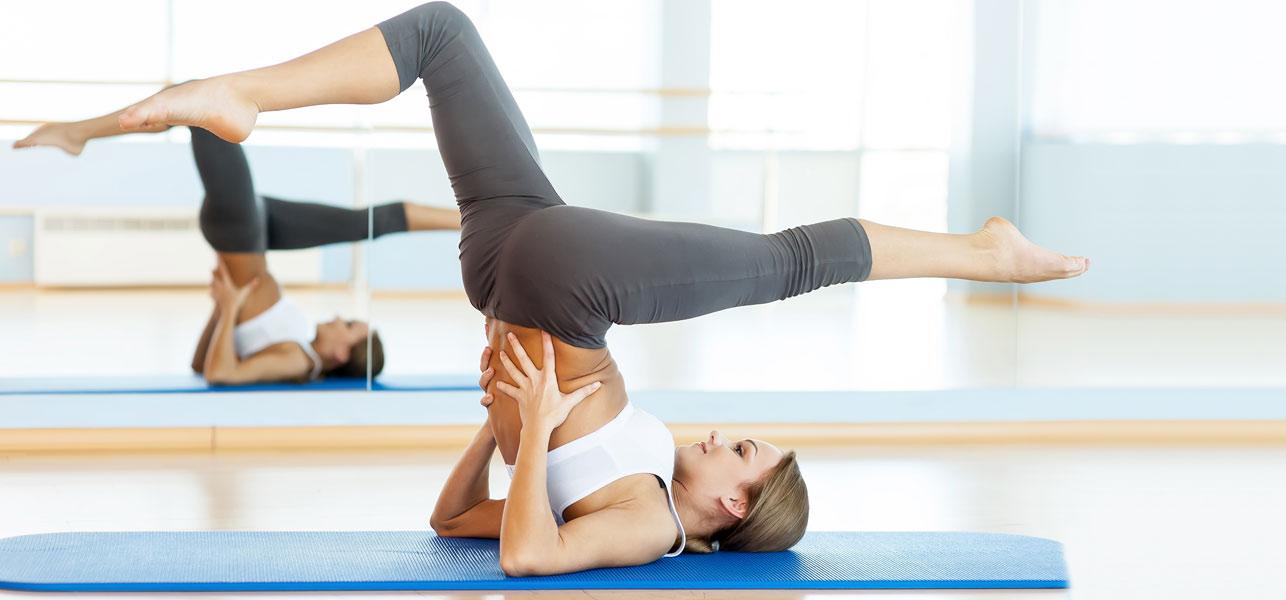Ancient yoga tradition describes thousands -- and by some accounts, tens of thousands -- of yoga postures. But chances are, with your likely packed schedule, fitting in enough time to practice even a fraction of those postures is nearly impossible. Most of us, however, can find 10 minutes a day in a quiet place to practice a few of them. In fact, even 10 minutes a day can help you reap the benefits of yoga, including increased strength and flexibility, more energy, improved respiration, enhanced cardiovascular and circulatory health, improved sports performance, injury prevention and lower stress levels. You can always progress to include more and different poses in your practice, but start by doing these 11 essential poses, and then add to your asana arsenal as time and your body allow.
DOWNWARD-FACING DOG (ADHO MUKHA SVANASANA)
A foundational pose in many styles of yoga, down dog is the whole package. “It helps strengthen the shoulders, arms and legs; it lengthens out the spine and helps relieve pain in the upper, middle and low back,” says Atlanta-based yoga teacher Tracy Sharp. It’s also a gentle inversion, which reverses the flow of blood in the body, benefiting the circulatory and lymphatic systems and fighting the effects of gravity on the body. HOW TO DO IT: Starting from a tabletop position with your shoulders directly over your wrists and your hips over your knees, curl your toes under and lift your hips skyward. Keep your spine flat and extend the backs of the legs only as far as the hamstrings allow. Spread your fingers wide and gaze at your feet. “For a more advanced practitioner, you can move into down dog from a plank position,” Sharp says.
2 GARLAND POSE (MALASANA)
Americans spend a lot of time sitting with their hips at 90 degrees. “Over time, this can create a host of problems, including limited mobility in your joints,” says yoga teacher Tracy Sharp. “[Garland pose] helps open the hips and inner thighs and lengthen out the spine. It helps you keep your pelvic and hip joints healthy.” HOW TO DO IT: Start with your feet wider than hip-width apart and turn your toes out slightly. Keep your gaze forward and your spine straight as you push your hips back and lower down as if into a chair. The goal is to bring the hips as low as you can without rounding the spine. If you can’t lower down without your heels lifting off the mat, roll up a towel or blanket and place it beneath the heels. Bring your hands to prayer position at mid-chest and push into the inner knees with your elbows, further opening your hips.
3 PLANK POSE
Plank pose is one of the best ways to build core strength as well as strength and stability in the wrists, arms, shoulders and quadriceps. HOW TO DO IT: Start in downward dog. Roll forward onto the balls of your feet and lower your hips so that your shoulders come directly over your wrists and your hips are in line with the top of your head and shoulders. Keep your abdominal muscles contracted and your leg muscles engaged. Beginners can modify the pose by lowering their knees to the ground while keeping a straight, solid line through the knees, hips and head.
4 FORWARD BEND (UTTANASANA)
“Forward bends are a great counter to hunching over computers all day,” says in-house yoga teacher at Clif Bar Sadie Chanlett-Avery. And they’re great for when you don’t have a mat or a lot of space. Calming to the nervous system, forward bends also stretch out the spine, glutes and hamstrings and strengthen the quadriceps and knees. HOW TO DO IT: Stand with your feet hip-distance apart. Fold forward at the hips, only going as far as your hamstrings allow. Keep your knees bent just a little and rest your stomach on your thighs. Advanced practitioners can straighten the legs. Chanlett-Avery recommends clasping the hands behind the back and bringing them overhead to increase mobility in the shoulders.
5 SEATED SPINAL TWIST (MARICHI’S POSE)
Twists are an excellent way to rejuvenate your body and realign your spine, especially when you’ve been sitting in front of your computer all day. “In a seated twist, your hips are anchored, so you have less chance of rotation in the hips, says yoga teacher Tracy Sharp. That keeps the twist in the thoracic spine and above for the greatest benefit. HOW TO DO IT: Sit on your mat with your legs extended in front of you. Bend your right knee and place your right foot on the mat about a few inches from your left leg on the outside of your left knee. Bring your right palm to the mat just behind your right glute. “A mistake that I see a lot of students make is they’ll place their palm out on an angle, which gives your body the opportunity to lean back, rather than keeping the spine straight,” Sharp says. Hug your right knee with your right arm or place your left elbow outside of your right knee. With each inhale, lengthen the crown of your head toward the ceiling; with each exhale twist a little deeper. Then switch sides.




















